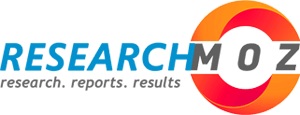
Bunker Fuel Market Size, Share & Trends Analysis Report by Application, By End-use, By Region
The global bunker fuel market will exhibit a growth rate of 4.4% CAGR and a value of USD 164.9 by 2030.
The bunker fuel market has evolved with the shipping industry. Over the past decades, global demand for bunker fuel has increased in tandem with global trade and the volume of vessels. The International Maritime Organization (IMO) is a special agency of the United Nations promoting safe, accessible, and sustainable shipping. It sets standards for safety, environmental performance, and operational practices for international ships. Reduced sulfur emissions from bunker fuels (from 3.5% to 0.5%) came into force as part of new regulations by the IMO to reduce greenhouse gas emissions as well as air pollution from shipping operations which are driving the market.
ResearchMoz provides a comprehensive report on the bunker fuel market. It presents key statistics on supply and demand, trends in this sector along with the latest news on regulations, technology developments, and competition analysis among operators.
Self-Driving Boosts Sales of Bunker Fuel
The global bunker fuel market will be driven by self-driving cars in the future. Companies such as Lyft, Uber, etc are in the process to sell 100% self-driving cars that will boost the demand for the bunker fuel market as this fuel will be used as an alternative fuel to reduce carbon emission.
Analysts’ Views
Regulations for bunker fuel have changed over the years. For example, as recently as 2020, there were a number of regulatory changes that are likely to affect the market.
The sulfur emissions from bunker fuels will be reduced from 3.5% to 0.5%. This is a significant decrease in the allowed percentage of sulfur emissions in bunker fuels and will impact global consumption patterns for this product. Another change from 2020 onwards is the use of biofuels (biodiesel and bioethanol) up to 3% by volume in bunkering fuel blends for ships with installed exhaust gas cleaning systems. Previously, only 1% was allowed. Further, the regulation coming into effect is that marine fuel oil with a sulfur content exceeding 0.10 % can no longer be used as an engine fuel or as fuel in any furnace on board a ship after September 30th, 2020. These developments will bring significant growth in the global bunker fuel market over the forecast period.
Read More: https://www.beetribune.com/bunker-fuel-market-revenue/
Competitive Landscape
The complete report about the competitive landscape of the global bunker fuel market is available with ResearchMoz to allow the new entrants to know the market well before taking decisions in this space.
The bunker fuel market is a highly competitive one, with many players in the industry. New technologies are emerging to meet this demand by producing lower-sulfur bunker fuels. For example, some companies have developed liquefied natural gas (LNG) as an alternative to oil-based bunker fuel. LNG can also be used for other sectors like power, petrochemicals and shipping containers.
The current players in the bunker fuel market include-
- Marathon Petroleum Corporation
- Brightoil Petroleum (Holdings) Limited
- Saudi Arabian Oil Co.
- Gazprom
- LUKOIL
- BP
- Royal Dutch Shell plc
- BP Sinopec Marine Fuels
- Chevron U.S.A. Inc.
- BUNKER HOLDING
- Total
- Neste
- Exxon Mobil Corporation
- Royal Dutch Shell plc
Key Takeaways
The comprehensive report on the bunker fuel market that elucidates growth drivers, trends, challenges, etc is based on factual findings and analysis. This will enable the stakeholders to make informed decisions to thrive in this business.
The key takeaways from the report are-
- One of the key takeaway points discussed in this article is that with the IMO’s 2020 regulation on reducing sulfur emissions, bunker fuel will soon be more expensive. This will lead to increased diesel prices and a shift toward oil-based fuels.
- The global bunker fuel market will exhibit growth over the next few years at a 4.4% CAGR and a valuation of USD 164.9 between 2020 to 2030.
- Another important point discussed here is that while some countries have decided to reduce the use of high sulfur bunker fuels (i.e. from 3.5% to 0.5%),
By Fuel Type
- High Sulfur Fuel Oil (HSFO)
- Very Low Sulfur Fuel Oil (VLSFO)
- Marine Gas Oil (MGO)
- Liquefied Natural Gas (LNG
- Other Fuel Types
Vessel Type
- Containers
- Tankers
- General Cargo
- Bulk Carriers
- Other Vessel Type
Download Report PDF: Bunker Fuel Market
Report Story


Leave Your Comment